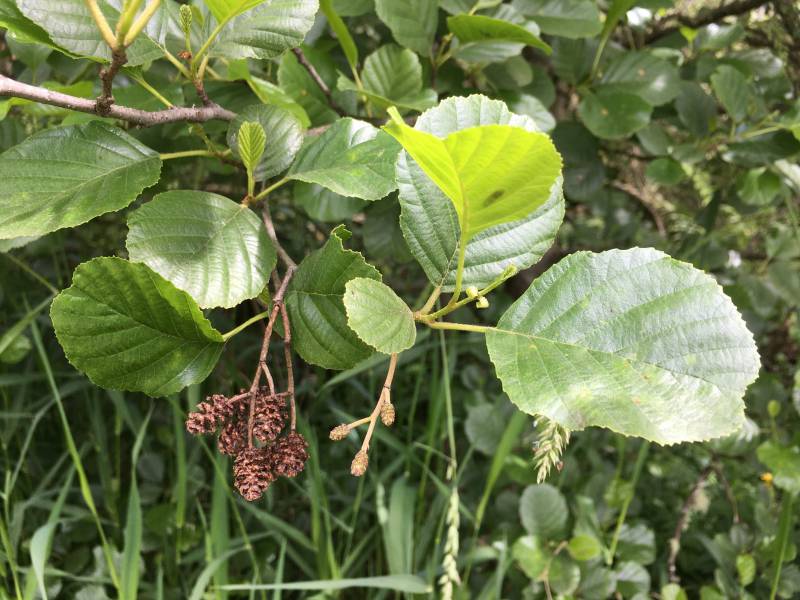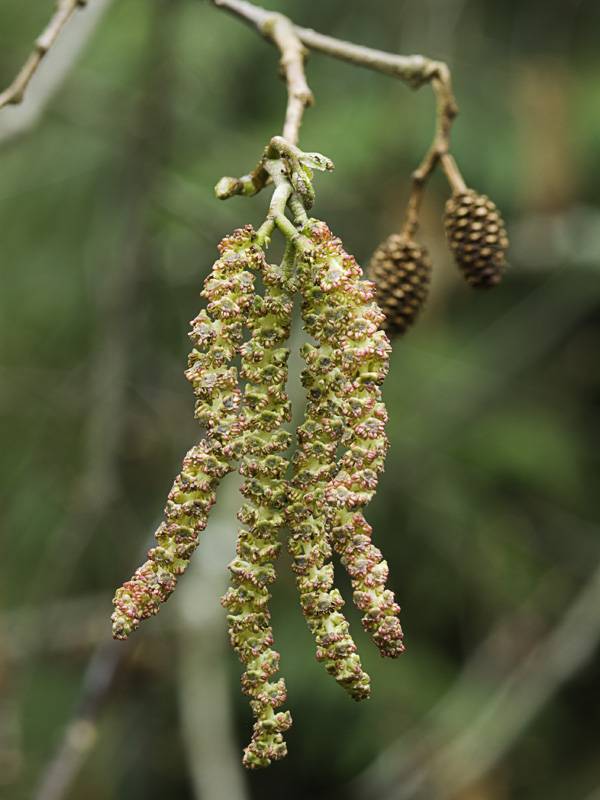Alnus glutinosa
Alnus rubra
Black alder, European alder
Oregon alder, red alder
Blades obovate to nearly orbiculate, 3--9 × 3--8 cm, margins often irregularly doubly serrate to nearly dentate, apex often retuse or obcordate, occasionally rounded; upper and lower surfaces heavily resin-coated.
Leaves alternate, simple, the blades broadly elliptic or elliptic-ovate, 5-15 cm. long, usually acute at each end, wavy and irregularly denticulate, the margins slightly revolute, the upper surface deep green and glabrous, the lower surface rusty-gray and gland-dotted.
Catkins developing before the leaves on growth of the previous season; staminate catkins clustered, pendulous, 5-12 cm. long; pistillate catkins cone-like, woody, ovoid-ellipsoid, 1.5-2 cm. long and 1 cm. thick, stout, thick peduncles under 1 cm. long.
Nutlet with thin, membranous wings 1/5-1/2 as broad as the nutlet
Alnus glutinosa
Alnus rubra
- Local floras:
BC,
CA,
OR,
WA
- Local Web sites:
CalFlora,
CalPhotos,
Flora NW,
PNW Herbaria
WildflowerSearch
iNaturalist (observations)
USDA Plants Database
- LBJ Wildflower Center
- SEINet
- Plants of the World Online
- Encyclopedia of Life
- Wikipedia
- Google Image Search



